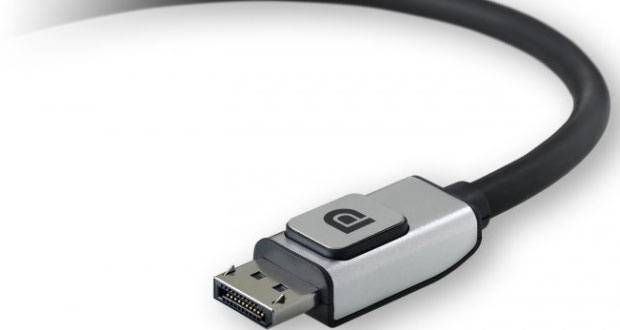VESA releases the DisplayPort 2.0 standard, with support for 16K panels
The new standard will make it possible to exceed the 8K limit by the end of next year, with an eye to VR and AR, and with the compatibility of the USB Type-C connector.
The Video Electronics Standards Association (VESA) DisplayPort standard is about to receive a substantial update with revision 2.0. This is the first improvement since March 2016, when version 1.4a was released, with the promise of triple the bandwidth compared to the predecessor. This means that DisplayPort 2.0 is already ready to go beyond 8K, and could also provide support for virtual reality.
With a peak transfer rate of 77.37Gbps, the new standard will not only triple the performance of the predecessor, but will exceed the latest iterations of the HDMI protocol (which reaches 48Gbps in its most modern version, 2.1, released at the end of 2017) . DP 2.0 will be able to support 8K displays even with 60Hz refresh rate, 4: 4: 4 and 30bit per pixel (bpp) color sampling without any compression.
The new standard will also manage 16K panels with 60Hz refresh rate, also in this case with 4:4:4 and 30bpp color sampling. For higher resolution, it will have to sacrifice some image quality by using the Display Stream Compression (DSC) in order to guarantee a continuous flow of images without interruptions or artifacts. DP 2.0 will be able to manage 10K displays at 60Hz without compression at 24bpp and other resolutions. Here are some examples of possible setups using the bandwidth of DP 2.0:
Dual display resolutions
- Two 8K (7,680×4,320) @ 120Hz and 40bpp 4: 4: 4 HDR displays (with DSC)
- Two 4K (3,840×2,160) @ 144Hz and 24bpp 4: 4: 4 displays (without compression)
Triple display resolutions
- Three displays 10K (10,240×4,320) @ 60Hz and 30bpp 4: 4: 4 HDR (with DSC)
- Three 4K displays (3,840×2,160) @ 90Hz and 24bpp 4: 4: 4 HDR (Without compression)
A very interesting feature of Display Port 2.0 is that the signal can also be transmitted via a USB Type-C connector and if you use a dock or an external hub, you can dedicate two lines for the DP 2.0 signal.
With two lines, the standard will be able to carry up to three 4K signals with 144Hz DSC, or two 120x 4KK (4,096×4,096 pixels) at 120Hz, also in this case by DSC compression (useful for example: for virtual or augmented reality), or still three Quad HD at 120Hz or an 8K at 30Hz without any compression.
The new multimedia standard will also introduce a new feature called Panel Replay, which will allow the image to be updated only in some parts of the screen where indeed there have been changes from the previous frames.
It is a function designed for energy saving and to avoid any overheating on small devices such as laptops. The first devices that will support DP 2.0 are expected to debut on the market by the end of 2020, probably in the last months of the year.

